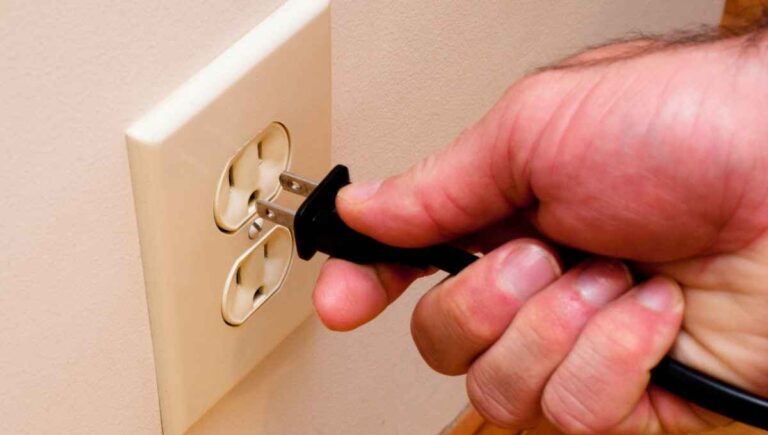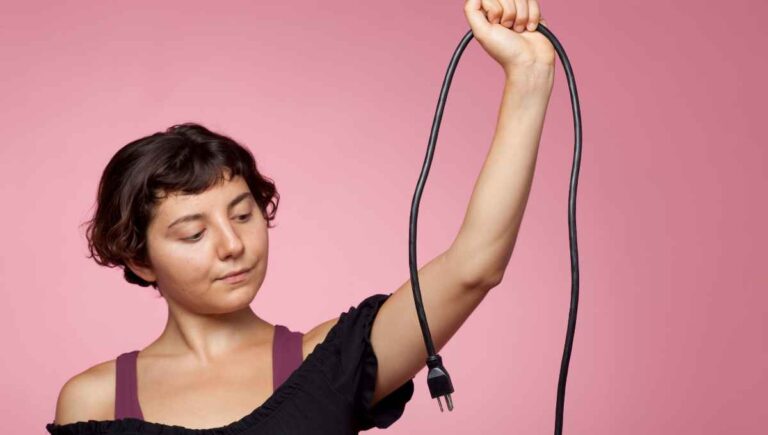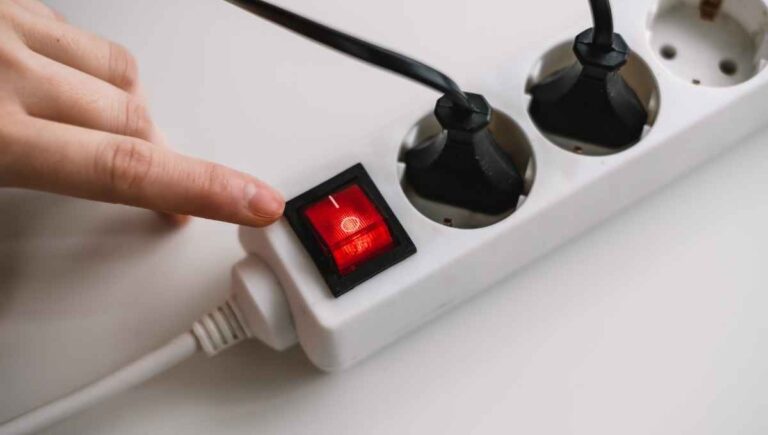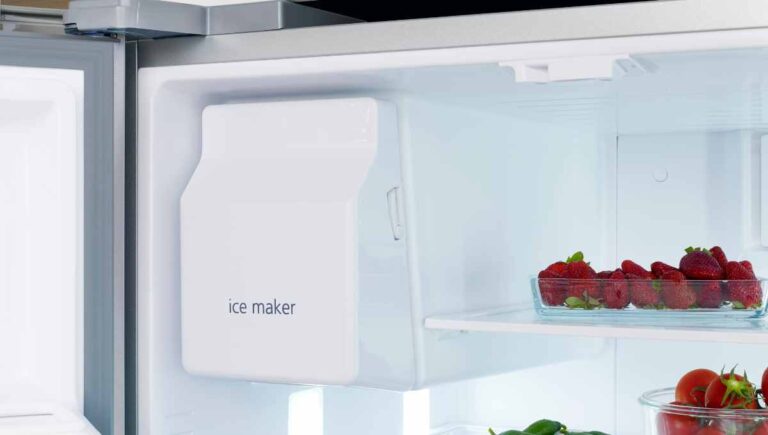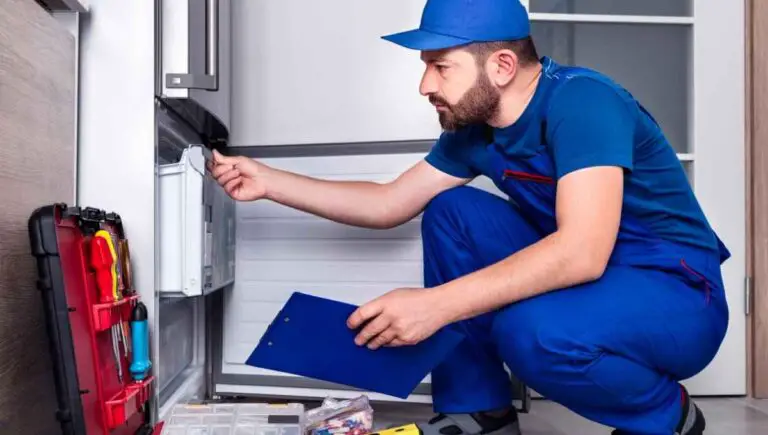Is Kitchen and Bathroom Water the Same? (Debunked)
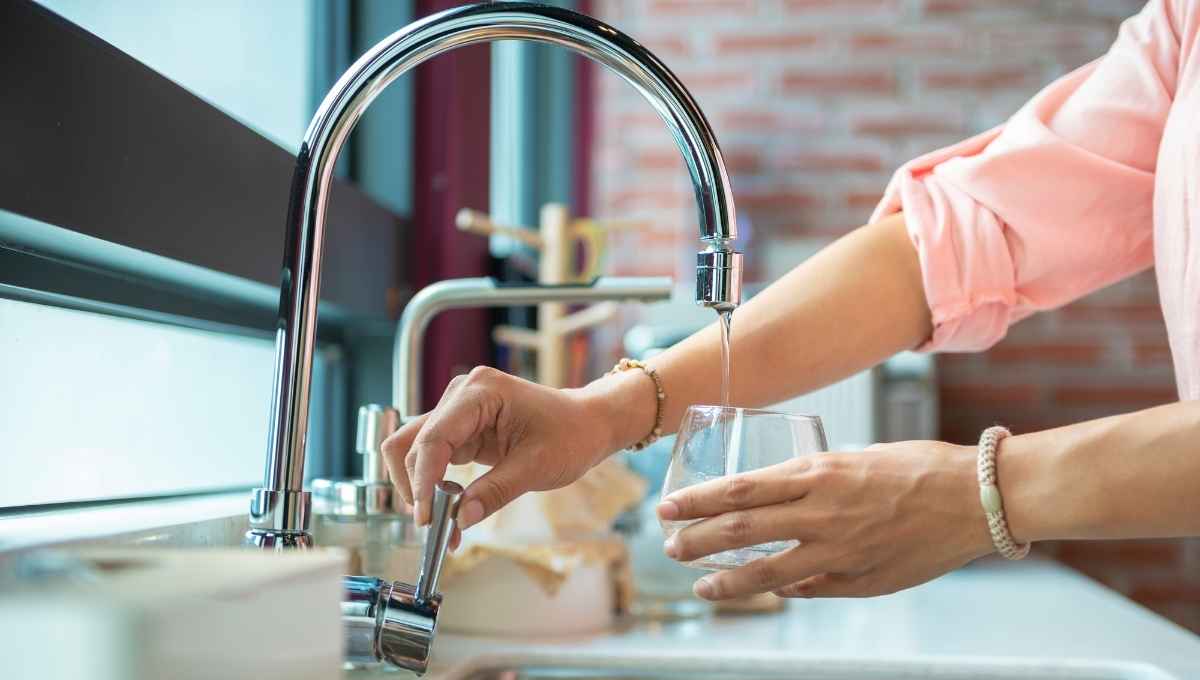
Have you ever noticed differences between the kitchen and bathroom water in your house? Perhaps the bathroom water doesn’t taste as fresh as the kitchen water. It can really cause one to ask if kitchen and bathroom water is the same?
Water from your kitchen and water from your bathroom is exactly the same. All of the water in your house comes from the same source. However, the water in your bathroom might taste slightly different. The more pipes the water travels through, the more chemicals and minerals it can pick up.
In this article, we’ll discuss why your water might taste different in your bathroom and also why your bathroom water could be colder than your kitchen water. We’ll also discuss if tap water is safe to drink and what kind of contaminants there could be found in tap water.
This post contains affiliate links. This means Household Blogger may earn a commission should you make a purchase using any of our links. Please refer to our full affiliate disclosure policy for full details.
Here’s a Quick Pro Tip!
Kitchen and bathroom water are technically the same, although your bathroom water might have a higher chance of containing lead. Tap water, in the US, is generally quite safe to drink but we would recommend these products for your tap water.
Products that we recommend to use for your tap water:
1. Drinking water test kit – You can use this at-home test kit to check for most of the common contaminants found in tap water.
2. Water filter – This filter is ideal if your tap water is not safe for consumption.
Kitchen vs Bathroom Water
Sometimes we tend to think that water from the bathroom is completely unsafe to drink – this is an old wives tale. Although in some situations it might be a safer option to walk to the kitchen.
Is Kitchen Water the Same as Bathroom Water?
Although it is hard to believe, water that you use in your kitchen comes from the same source as water that you use in your bathroom. However, there is a difference between the water from your kitchen and your bathroom.
The pipes that are used to channel the water from the source to the bathroom are different than the pipes in the kitchen.
This is the only difference between the two water faucets, and both are equally safe to consume.
Is Toilet Water the Same as Shower Water?
In some houses, the water line in the bathroom is connected, so the water that you use to flush your toilet comes from the same source as the water that you use to shower. If you have low water pressure in your home, you might not be able to shower and flush the toilet at the same time.
The water from both your shower and toilet also goes to the same place after usage.
The water goes down the same sewage line or into the same septic tank, depending on your sanitary process. This is the only difference between shower water and toilet water.
Is Water From the Bathroom Sink Dirtier Than Water From the Kitchen Sink?
Water from your bathroom sink is not any dirtier than the water from your kitchen sink, as both come from the same source of water. Although we might think that the water from the bathroom is dirtier, it really is not.
Some people assume that water from the kitchen is safer to ingest because the pipes leading to the bathroom are more likely to get lead. However, pipes that lead to the kitchen can also get lead.
However, pipes that lead to the kitchen can also get lead. It all depends on the pipes in your home and where they are located.
The best way to know if there are contaminants in your home’s water is to get your water tested.
The quality of your tap water can vary depending on where you live. It is important to know the quality of your water, as some contaminants can be harmful to your health.
There are many ways to test the quality of your water. You can either have it tested by a professional or you can purchase a do-it-yourself water testing kit.
If you decide to have your water professionally tested, you can contact your local water utility company. They can provide you with a list of certified laboratories in your area.
If you decide to test your water yourself, make sure to follow the instructions that come with the kit carefully. Incorrect testing could lead to inaccurate results.
Do Bathroom Faucets Contain Contaminants That Make Water Unsafe to Drink?
Bathroom faucets do not contain any more harmful or unsafe contaminants than any other faucet in your house. Below we list some of the most common tap water contaminants
The most common tap water contaminants:
- Chlorine – This is added to tap water as a disinfectant, it has a very strong smell. Usually, you can not taste it in your water.
- Lead – This is a toxic metal, especially for children and infants. There are small amounts of lead in most tap water in the US.
- Iron – This should not be in your water. If your sink starts to turn red or your water is red you should contact a plumber.
- Hydrogen sulfate – If you smell rotten eggs in your water, you could have corroding pipes. You should also contact a plumber in this case.
Can You Drink Bathroom Tap Water in Hotels?
Although hotel bathroom tap water is safe to use to wash up and brush your teeth, it is not recommended to drink hotel bathroom tap water. You should rather purchase bottled water for consumption when away from home.
Hotels are usually older buildings. These buildings have lead piping which makes the water unsafe to drink.
As visitors you cannot be sure of how well their septic tanks are maintained and if it is cleaned regularly.
What Happens if You Drink Unfiltered Tap Water?
In the US it is mostly safe to drink unfiltered tap water. The contaminants in the tap water are usually very little and not enough to cause any serious worries. However, some dangers are lurking in unfiltered water.
Untreated water, also known as raw water, could be infested with different kinds of harmful microorganisms which could lead to health issues such as diarrhea, sepsis, cholera, or even death.
The Association of State Drinking Water Administrators (ASDWA) states that water comes from groundwater, streams, rivers, etc. This natural water is contaminated by animal by-products and pollution. The EPA recommends filtering water before consumption.
Can Tap Water Make You Sick?
In most parts of the US, it is safe to drink tap water but that doesn’t mean that it cannot make you sick. Tap water contains a lot of contaminants, such as fluoride, chlorine, and minerals. These contaminants filter the water but they can also cause some harm to humans.
Tap water can contain bacteria and parasites, like E.coli or Giardia, which can make you sick.
Chemicals like bleach and pesticides are also usually found in tap water, and surrounding hardware, and are hazardous for human consumption.
Health Concerns
The quality of your drinking water plays a huge role in your overall health, so it’s very important to know the risks of drinking tap water.
Is Kitchen Tap Water Safe to Drink?
Kitchen tap water is safe to drink, despite the contaminants, many children and adults across the US drink water from the kitchen tap. Some plumbers also put water purifiers into the pipes leading to the kitchen.
You can still get sick from drinking tap water though, when pouring a glass you should check that the water is clear, not milky and that there are no metallic or foul smells.
These signs could indicate that your tap water could be contaminated.
Is Bathroom Water Safe to Drink?
Bathroom tap water is more likely to contain lead, which is toxic to humans. It is recommended to avoid drinking bathroom tap water, rather drink water from your kitchen sink.
According to research done by Brunel University, every time you drink tap water you could be drinking other people’s second-hand medication.
A substantial amount of prescription drugs goes through our bodies and our waste into the sewage system.
Although sewage is treated, not all drugs are removed and they end up back in our water supply.
When these drugs mix with the chlorine in our water it creates byproducts that are harmful to human health.
These byproducts have been linked to cancer and other diseases.
Is It Safe to Drink Hot Water From the Bathtub Faucet?
It’s never safe to drink from the hot water tap in any room of your house. This water gets stored in geysers and tanks where it gets heated multiple times. Bacteria and lead are more likely to thrive in hot water pipes.
According to the US Environmental Protection Agency, in homes with lead pipes that connect to the water main, there is a significant increase in lead in the water.
Especially water that has been standing still in the pipes, i.e. hot water.
Hot water also dissolves lead pipes more quickly, which increases the lead levels in the water.
You could also be drinking rust from old pipes when you drink hot tap water. This happens when the hot water causes the pipes to corrode and the rust gets into the water.
Therefore, it is not recommended to drink any kind of hot tap water.
Will I Get Sick if I Drink Tap Water From the Bathroom?
The US has one of the safest public water systems, but it is still possible to get sick when drinking tap water. Most kitchen faucets have a water purifier which might help to combat the bacteria in the water.
E. coli and salmonella are bacteria that are very common in tap water and these bacteria can make you quite sick.
You should always be on the lookout for public safety alerts from your local department of health. If any surge of bacteria is detected you should immediately stop drinking tap water.
Can You Drink Bathroom Tap Water if Boiled?
You can drink bathroom tap water if boiled as boiling water kills most microorganisms and bacteria that can cause disease. Thus boiling water makes it a lot safer to drink, especially for pregnant women, children, or the elderly.
If you suspect that your tap water might be contaminated or your local health department releases a statement, you can boil your water before consumption to make it safe again.
Although this does not include water contaminated by fuel or radioactive material.
Why Is Bathroom Water Colder Than Kitchen Water?
Bathrooms have a lot more pipping than kitchens and the water meter is usually also closer to the bathroom. Thus it takes a lot longer for the kitchen water to get as cold as the bathroom water.
The water travels through more pipes to get to the kitchen and in those pipes, the water temperature rises to meet the temperature of the thermostat inside your house.
By the time the water reaches your kitchen faucet, it’s already lukewarm.
Bathroom water is often colder than kitchen water because the bathroom is usually closer to the water meter and has less piping than the kitchen.
The water in the pipes also cools down more quickly on its way to the bathroom.
Why Does Water From the Bathroom Taste Different?
The water from your bathroom comes from the same source as the rest of the water in your home, but the water in the bathroom is oftentimes colder due to it being closer to the water meter.
Bathroom water pipes are also more likely to be lead pipes or have a lot of iron, which transfers into the water giving it a metallic taste.
There are a lot of factors that can fluence the taste of your water; faucet, water pipes, lack of filtration, reduced chlorine, increased chlorine, etc.
Tap water in Different Countries/States
Some countries, states, or cities have amazing drinking water, others do not. When traveling it’s important to do your research.
In What Countries Can You Drink Tap Water?
When you visit another country it is important to know if you can drink the tap water, because although we might have clean tap water in the US that is not necessarily the case across the whole world.
Countries where it is safe to drink tap water:
- United States of America
- Canada
- Chile
- Greenland
- Iceland
- Most countries in Europe (UK, Germany, Spain, Ireland, France, Italy, Swede, Poland, etc.)
- Singapore
- Japan
- Saudi Arabia
- Australia
- New Zealand
What State Has the Worst Tap Water?
Texas is widely known as the state with the worst public water system in the US, especially in the small rural communities where there are a lot more people than providers.
Due to old water systems and old pipes lead, radiation and arsenic are some of the top pollutants found in the water of rural Texas communities.
A lot of residents also live in areas with contaminated groundwater.
What City Has the Cleanest Tap Water?
Memphis, Tennessee has the sweetest water in the US because its water supply comes from natural reservoirs below the surface of the Earth. Most of the water is purified through sand aquifers, which means that it needs little filtration by the time it reaches the surface.
Memphis water has noticeably low levels of copper, lead, and fluoride. A Memphis Light, Gas & Water report actually stated that there is no detectable lead in Memphis’ water.
This city’s water is known as some of the sweetest in the world.
Testing the Drinking Water
In this section, we discuss why you should test your drinking water and how you could test your drinking water.
How Can You Test if Your Tap Water Is Safe?
Making sure that your tap water is safe for consumption is critical to ensuring that your family stays as healthy as possible. We have compiled a list of ways that you can test if your tap water is safe.
Ways to test if your tap water is safe to drink:
- Check that your water is completely clear and transparent, if you notice that your water is cloudy it could indicate that your water is contaminated.
- If your water looks yellow it could mean that it has chromium-6, which is extremely unhealthy for humans. Orange or brown water could also indicate rust. Your water should be white and clear if it’s safe to drink.
- Wash your hands with soap, if your hands feel slimy afterward it could indicate traces of metal elements such as lead or aluminum in your tap water.
- Use the EPA drinking Water Watch Program to search for any health hazards in your county.
How Can You Test if Your Bathroom Tap Water Is Safe to Drink?
There are a few ways that you can test if your tap water is safe to drink. Cloudiness, discoloration (yellow or brown), or a slimy feeling on your hands after washing could all be signs of your tap water being unsafe.
You can also purchase an at-home water testing kit to test for common bacteria in your water.
If this kit indicates a surge of a certain bacteria or metal you could contact your local county water system to check for any surges in the water system.
What Is the Best Way to Test Your Water?
The best way to get your water tested is through the health department in your county or state. This department is specifically trained to test for common bacteria and chemicals that may be present in your water.
If you want to test the water quality in your home you can contact your county health department and they should assist you with testing for bacteria or nitrates in your water.
You could also have your water tested by a state laboratory.
Related Questions
Is Tap Water Better Than Bottled Water?
Depending on how safe your county’s water system is, it is usually better to drink tap water than bottled water. Tap water gets tested and checked more often than bottled water.
Tap water is also a lot more convenient, it is readily available, it is cheaper than bottled water and ultimately it is better for the environment.
Plastic water bottles are unnecessarily wasteful. We recommend using a reusable bottle to store your tap water when leaving the house.
What’s the Best Water Filter?
Water filters can be used to purify your water of bacteria and metals. We would recommend the Big Berky water filter with a 2.25-gallon capacity. This filter can purify water for up to four people every day.
The Big Berky filter tests for over 200 contaminants, you can use it on tap water, as well as river or pond water, making it perfect for rural communities.
The filter also does not need electricity to purify water, it simply uses gravity, making it truly perfect for any situation.
Final thoughts
Now you understand how kitchen and bathroom water are actually the same, how important it is to always drink clean water, and how to look for signs that your tap water is not safe to drink.
Drink safely out there!





